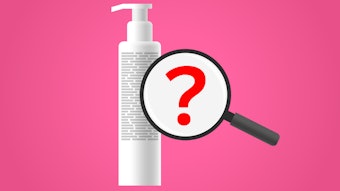The European Union (EU) issued a new Adaptation to Technical Progress (ATP) in September 2006. This ATP changed item 419 in Annex II (List of Substances Which Must Not Form Part of the Composition of Cosmetic Products) for the fourth time since it was added to this Annex in 1997.
The previous texts had read: bovine, ovine and caprine tissues and fluids from the encephalon, the spinal cord and the eyes, and ingredients therefrom. This was changed to the banning of animal origin materials with the exception of tallow that has been treated by transesterification or hydrolysis at a minimum of 200°C and at an appropriate corresponding pressure for 20 min, which produces glycerol, fatty acids and fatty acid esters.
Saponification with sodium hydroxide (12 M) that produces glycerol and soap is also an exception. Saponification with sodium hydroxide has a batch process at 95°C for 3 h or continuous process at 140°C, two bars (2000 hPa) for 8 min or equivalent conditions. Updated texts: The new text reads: Category 1 material and Category 2 material as defined in Articles 4 and 5 respectively of Regulations 1774/2002/EC1 of the European Parliament and of the Council, and ingredients derived therefrom. This goes into effect March 3, 2007.
The EU definitions of Category 1 and 2 materials and animal origin can be perceived as critical. The EU defines animal as any vertebrate or invertebrate animal including fish, reptiles and amphibians. The terms bovine (cows), ovine (sheep) and caprine (goats), however, have been omitted. This new definitions cover all animals and fish.










